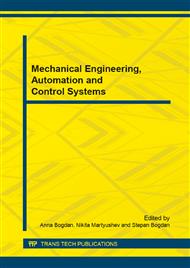[1]
Thermochemical treatment of metals and alloys: Handbook. Moscow: Metallurgy, (1981).
Google Scholar
[2]
Surface modification and doping by laser, ion, and electron beams / Under the editorship of J. Pout, G. Foti, and D. Jacobson. M.: Mechanical Engineering, (1987).
Google Scholar
[3]
Yu.F. Ivanov, S.V. Karpiy, M.M. Morozov, N.N. Koval, E.A. Budovskikh, V.E. Gromov, The structure, phase composition, and properties of titanium after electroexplosive doping and electron-beam treatment. Novokuznetsk: Publishing NPK, (2010).
DOI: 10.15407/ufm.11.03.273
Google Scholar
[4]
A. Ya. Bagautdinov, E.A. Budovskikh, Yu.F. Ivanov, V.E. Gromov, Physical basis of electroexplosive doping of metals and alloys, Novokuznetsk, Publishing SibGIU, (2007).
Google Scholar
[5]
N.N. Koval, Yu.F. Ivanov, Surface nanostructuring of metal-ceramic and ceramic materials during pulsed electron beam treatment, Russian Physics Journal. 5 (2008) 60-70.
Google Scholar
[6]
V. Rotshtein, Yu. Ivanov, A. Markov, Surface treatment of materials with low-energy, high-current electron beams, in Y. Pauleau Materials surface processing by directed energy techniques, Elsevier Publishing, 2006, рр. 205-240.
DOI: 10.1016/b978-008044496-3/50007-1
Google Scholar
[7]
I.I. Kornilov, N.M. Matveev, L.I. Pryakhina, R.S. Polyakova, Metal-and-chemical properties of the periodic system elements. Moscow.: Science, (1966).
Google Scholar
[8]
I.I. Kornilov. Metallides and the interaction between them. Moscow: Science, (1964).
Google Scholar
[9]
Diagrams of binary metallic systems / Under the editorship of N.P. Lyakishev, Moscow: Mechanical engineering, 1-3, 1996-(2000).
Google Scholar
[10]
G.R. Odette, M.J. Alinger, Wirth, Recent developments in irradiation-resistant steels, Annual Review of Materials Research, 38 (2008) 471–503.
DOI: 10.1146/annurev.matsci.38.060407.130315
Google Scholar
[11]
M. Klimiankou, R. Lindau, A. Moslang. Energy-filtered TEM imaging, EELS study of ODS particles, Argon-filled cavities in ferritic-martensitc steels, Micron, 36 (1) (2005) 1–8.
DOI: 10.1016/j.micron.2004.08.001
Google Scholar
[12]
Antoine Claisse, Par Olsson First-principles calculations of (Y, Ti, O) cluster formation in body centered cubic iron-chromium, Nuclear Instruments and Methods in Physics Research, B. 303 (2013) 18–22.
DOI: 10.1016/j.nimb.2013.01.016
Google Scholar
[13]
C. Ming, H. Bengt, J. G. Ludwig Thermodynamic modeling of the ZrO2–YO1, 5 system, Solid State Ionics, 170 (2004) 255–274.
Google Scholar


